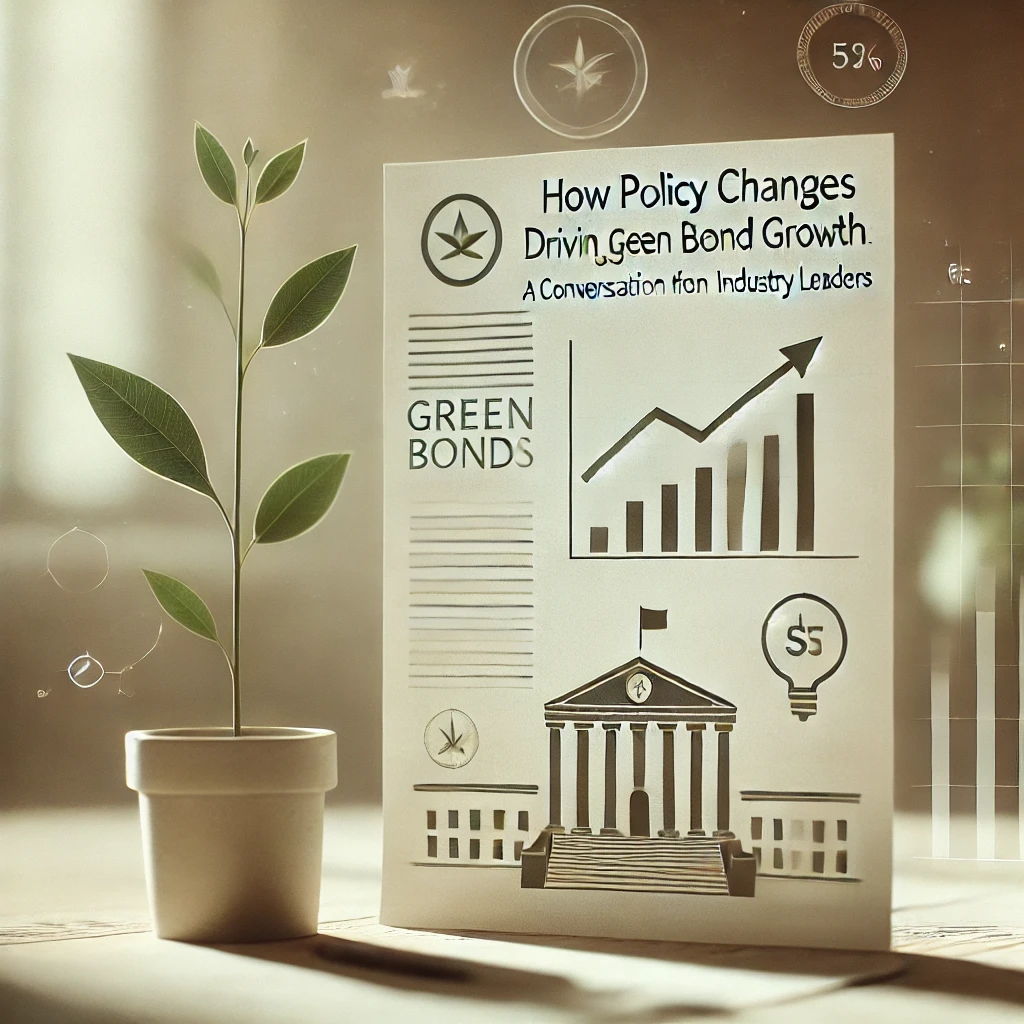Green bonds are rapidly gaining traction as a vital financial instrument in the global push towards sustainability. These bonds, which finance environmentally friendly projects, have seen exponential growth in recent years, and much of this momentum can be attributed to favorable policy changes. Governments and regulators worldwide are increasingly recognizing the importance of green bonds in achieving climate goals, leading to a wave of supportive policies and initiatives. To gain deeper insights into this trend, we sat down with industry leaders to discuss how policy changes are driving the growth of green bonds.
The Role of Policy in Shaping the Green Bond Market
Before diving into the expert perspectives, it’s essential to understand why policy plays such a critical role in the green bond market. Unlike traditional bonds, green bonds require a framework that ensures the funds are used for genuinely green projects. Regulatory oversight, standardization, and incentives are all crucial to building trust in the market and encouraging broader participation.
Several key policy initiatives have been instrumental in driving green bond growth:
– Regulatory Frameworks: Countries are introducing green bond guidelines and frameworks to standardize the market. In India, the Securities and Exchange Board of India (SEBI) issued guidelines to define the criteria for green bonds and ensure transparency.
– Government Incentives: Tax incentives, subsidies, and favorable borrowing conditions have made green bonds more attractive to both issuers and investors.
– International Agreements: Global commitments, such as the Paris Agreement, are pushing countries to reduce emissions and invest in sustainable development, further boosting the demand for green bonds.
Conversation with Industry Leaders
We spoke with several experts in green finance to understand how policy changes are influencing the market and what lies ahead for green bonds.
1. Regulatory Standardization is Key
*Arun Kumar, Managing Director at Green Finance India*
“One of the most significant drivers of green bond growth is regulatory standardization. In the early days of the green bond market, there was a lot of skepticism about greenwashing—where funds were labeled as green but weren’t necessarily being used for environmentally friendly projects. Now, with clear guidelines from regulators like SEBI, we have a much more transparent market. Investors can trust that their money is going towards legitimate green initiatives. This has made green bonds far more appealing, especially for institutional investors who are looking to meet their ESG (Environmental, Social, and Governance) criteria.”
Arun’s perspective highlights the importance of trust and transparency in the green bond market. As more governments implement standardized regulations, we can expect to see continued growth in green bond issuances.
2. Government Incentives are Driving Participation
*Dr. Meera Singh, Chief Economist at Climate Capital Advisors*
“Government incentives have played a crucial role in making green bonds attractive to a broader range of issuers. In many countries, including India, we’ve seen tax breaks and subsidies for green bond issuances, which lower the cost of capital. This makes it easier for companies, especially those in the renewable energy and infrastructure sectors, to raise funds for green projects. Additionally, these incentives encourage innovation—companies are now more willing to explore sustainable solutions because they know there’s financial support available.”
Dr. Singh’s insights reveal how government incentives are lowering barriers to entry for green bond issuers, thereby expanding the market. These incentives not only make green bonds more financially viable but also stimulate innovation in the green economy.
3. Global Commitments are Fueling Local Action
*Rajesh Patel, Head of Sustainability at India Renewables Ltd.*
“Global commitments, such as the Paris Agreement, have created a sense of urgency among policymakers and corporations alike. Countries are setting ambitious climate targets, and green bonds are becoming a key tool for financing the transition to a low-carbon economy. In India, we’ve seen a strong push from the government to align with these global goals, and green bonds have become a popular way to fund renewable energy projects and infrastructure development. The government’s commitment to meeting these international targets is driving both public and private sector participation in the green bond market.”
Rajesh’s comments underscore the impact of global agreements on local policy decisions. International climate goals are not only influencing national policies but also driving corporate strategies, leading to a surge in green bond issuances.
4. The Future of Green Bonds: Challenges and Opportunities
*Anjali Desai, ESG Analyst at Sustainable Investments Group*
“While the growth of the green bond market is encouraging, there are still challenges to overcome. One of the biggest hurdles is ensuring that the funds are used as intended and that there’s accountability in the reporting process. As the market grows, there’s a need for more robust reporting and verification mechanisms to ensure that projects deliver on their environmental promises. However, the opportunities are immense. As more governments implement policies that support green finance, we’re likely to see innovative green financial products emerge beyond just bonds—such as green loans, sustainability-linked bonds, and impact bonds. The entire financial ecosystem is shifting towards sustainability, and green bonds are just the beginning.”
Anjali points to the importance of ongoing monitoring and reporting in the green bond market. As the market evolves, there will be opportunities for new green financial products that go beyond bonds, further expanding the tools available to combat climate change.
Conclusion: The Power of Policy in Green Bond Growth
The conversation with industry leaders makes it clear that policy changes are a driving force behind the growth of the green bond market. Regulatory frameworks, government incentives, and global commitments are all playing crucial roles in shaping the market and making green bonds an attractive option for issuers and investors alike.
Looking ahead, as governments continue to prioritize climate action and sustainable development, we can expect the green bond market to expand even further. The lessons learned from these policy-driven successes will also inform the development of other green financial products, helping to finance the transition to a low-carbon economy.
For investors and companies interested in contributing to the fight against climate change, green bonds offer a unique opportunity to align financial returns with environmental impact. As policy support grows, so too will the potential for green bonds to make a meaningful difference in the global effort to combat climate change.





